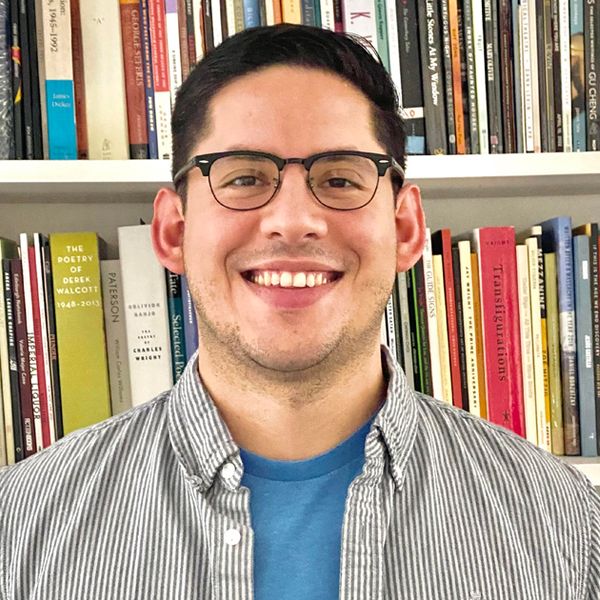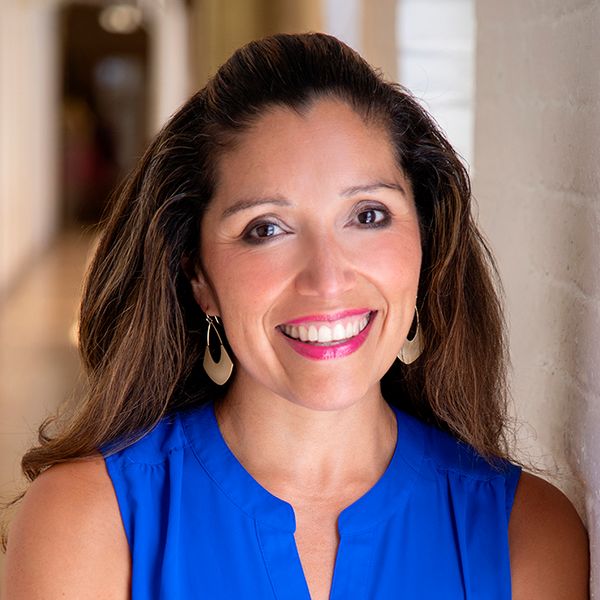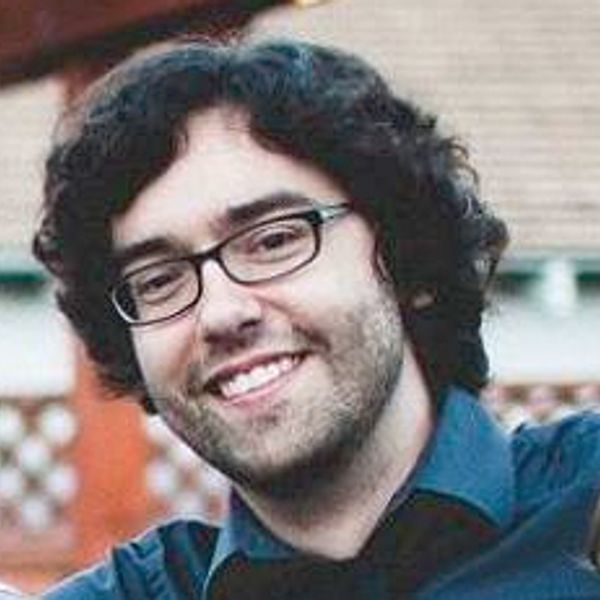Diego Isaias Hernández Méndez, Bañando en Tiron / Bathing on Holy Saturday (detail), 2017, oil on canvas. Arte Maya Tz’utujil Collection.
Introduction
An introduction to To Never Have Risked Our Lives: A Portfolio of Central American and Mexican Diaspora Writing
For much of my childhood, the only two books in our house were the Yellow Pages and the Bible. It wasn’t that my parents didn’t value stories. If anything, the opposite was true. My mother, especially, told stories constantly—in the kitchen, in the car, in English, in Spanish. Many of these stories still live in the corridors of my memory. How she moved to “America” from Guatemala at the age of eighteen, taking a one-way flight to Los Angeles and, later, another one-way to Boston. How my father moved to the United States temporarily, and for one reason: to make enough money to buy a motorcycle. They met, and the rest is my history. The stories they tell are as real for me as the books—actual, physical books—that finally entered my home when, in third grade, I got my first library card. I remember running my thumb across the white strip of plastic where I’d written my name. The world cracked open.
When I was asked to coedit this portfolio of Central American and Mexican diaspora writing, my body said yes before I did. It ached for the stories I never knew I’d been missing. The offer to help document a shared existence that transcends geographic, physical, and spiritual borders felt like a call to action—an opportunity to lift voices, or rather to allow the stories we tell about ourselves to shine brighter.
In compiling this issue, I was reminded of cultural theorist Gloria Anzaldúa, whose famous work Borderlands/La Frontera: The New Mestiza shaped so much of my consciousness as a Latina, writer, and educator. She believed that “making anthologies is also activism. In the process of creating the composition, the work of art, you’re creating the culture.” This portfolio, much like an anthology, is a way to reexamine our historical existence while affirming our personal experiences through artistic expression.
And yet—my parents’ way of telling stories was important too. So how could we include oral storytelling, a centuries-old pillar of culture in so many communities but, dare I say, especially for those in the Central American and Mexican diaspora? I turned to technology, to Zoom, for the interviews that appear in the online portion of this portfolio. They include conversations with a migrant who recounts his experiences as the son of a schoolteacher and his decision to cross the border with the help of a coyote; a Guatemalan adoptee; and an activist who, after twelve years of living in the U.S., decided to return to Guatemala to regain his identity, rediscover his roots, and help create the Guatemalan Dream. In this way, both written and oral stories are included “in these pages,” our attempt to weave together the two forms, the two traditions.
People talk about moving those in the margins to the center. But as you will read in these narratives and hear in these interviews, we are never in the margins of our own stories.
Today, my house is filled with stacks of books. These zigzag sculptures are inspiring to me, a physical manifestation of the abundance of stories in the world, and a reminder that sharing stories with others is at the core of what it means to be human. I look forward to adding this portfolio to the glorious pile.
—Jennifer De Leon
My grandmother, like other members of her family, came to California from Mexico in the 1940s and joined a mixed Bay Area community of other immigrants and people from all over the U.S. Right away she started her process of becoming “American.” This meant abandoning her native language and most of her associations with her home country. She would insist, for instance, through thickly accented English, that she had no accent. I can understand why: she wanted to start over, work toward a better life in a new country. But in my family, we view her decision with melancholy; we missed out on growing up bilingual and more fully bicultural. Nevertheless, influences from Latin American culture are still present in my family, and we find ways to reconnect with the Mexican part of our identity—coediting this portfolio is one way, for me. My grandmother wanted our family to be American, but being from somewhere else, merging cultures, having relatives with accents: these are some of the most American experiences.
Soon, the last Mexican-born native Spanish speakers in my family will be gone. We will be a fully “American” family. In some ways, this is not sad or unusual: people move over time, families grow and change, new cultures develop. But I’m aging along a kind of cliff: at a certain point, the Mexican part of my family will pass away and become a part of my past—my ancestry instead of my culture.
This portfolio is, among other things, a way for people like me to better understand the system of diaspora that led our families to move to new countries and form new cultures. A twisted part of the American dream is the idea that here in the U.S. you can erase your past and “start over.” Through this portfolio we can do the opposite: reclaim the past, reawaken memories, and connect with a new generation of people who are moving across borders and freshly experiencing what second- and third-generation Latinx Americans may have forgotten.
—Ben Black
A memory: The turnstiles were sticky. Bent and dented. Worn from years of hands, chests, belt buckles, and the ashy elbows of children like me. I felt I’d earned the right to swing through them, to take the final steps from the turnstile to the heavy glass door to the parking lot, where hordes of weekend cars baked in the south Texas heat. But the customs agent didn’t believe my grandmother was my grandmother. His complexion was darker than hers, and from his accent I thought maybe he had a grandmother from Mexico too. My grandmother frantically pulled documents from her purse, shuffling through baby photos that then fell on the floor. She insisted that I was who I was, and that she was who she was claiming to be also. But the agent kept telling us, in a mix of English and Spanish, that something wasn’t right here, that we needed to step to the side while he, and the other agents now swarming around us, sorted this whole mess out. My grandmother was escorted to a room. I was seated just outside the door, on a bench. Time passed, then an agent squatted in front of me. She was soft-spoken, motherly even in her uniform, and she asked if the older woman inside the room was my grandmother. I nodded, unsure if my acknowledgment would get her in trouble. The agent said I didn’t have to be scared, that I could tell the truth because they’d already called my mother and she was on the way to pick me up.
Two decades later, I keep returning to those moments with my grandmother, teasing out the details of that summer day at the U.S. Port of Entry and wondering how she felt, being accused, as my mother would tell me in adulthood, of trying to kidnap a white child. My grandmother and I looked nothing alike. She was short, her face weathered by a childhood working in the fields, her staticky hair done up in an efficient bun, while I had straight hair, a gringo’s complexion, and a last name I couldn’t pronounce—my tongue deeply scarred by an English-only vocabulary. The agent took one look at us and decided our differences were too big not to warrant suspicion. And there was, in fact, a step missing between child and woman, though not for the sinister reason the agent wanted to believe. A whole generation, country, and language divided my grandmother’s world from mine. That gain and loss, clarity and misunderstanding, acceptance and shame, are at the heart of what editors Jennifer De Leon, Ben Black, and I have wanted to explore here.
While there are pieces centered on cultural loss (the fact that the portfolio was almost entirely written in English is evidence of this), there is a reclamation of identity that takes readers beyond the U.S.– Mexico border and into the mercurial neighborhoods of El Salvador, the mythological underworld of the Aztecs, and the uncertain school grounds of a Panamanian landscape as lush as it is volatile. Inevitably, the narratives seep back into the United States. In the backyards of the American Southwest, the futuristic drug-infused fields where migrants work tirelessly toward their quotas, and a line at a Chipotle where history meets the realities of assimilation, we see the complex decisions that go into navigating economic desperation amid so much uncertainty and indifference. Mexico and the countries that comprise Central America are vast and multifaceted, and it would be disingenuous to claim that this portfolio seeks to encompass the entirety of a region. But a gathering like this can help open the psychological borders that seem to cordon off, at least from the U.S. perspective, an area of the world that’s both deeply welcoming and deeply complicated.
Fifty years from now, when a reader or editor looks deep in the AGNI archives and finds this portfolio, we believe they’ll see the subjects and themes that preoccupied us in our time. We expect that every poem, story, and essay included will contribute to their understanding of the people who claim some part of Mexico, Guatemala, Honduras, Nicaragua, Costa Rica, Belize, and El Salvador as their own. May they look at these pages the way I looked at my grandmother after that incident so many years ago: eager and ready to embrace the new and deeply familiar.
—Esteban Rodríguez
The portfolio’s title is a variation on the last line of Javier Zamora’s “El Salvador.” In his collection Unaccompanied, the poem closes, “Tonight, how I wish / you made it easier to love you, Salvador. Make it easier / to never have to risk our lives.”

Esteban Rodríguez is associate poetry editor of AGNI and has been part of the editorial team since 2019. He is the author of eight poetry collections, most recently Lotería (Texas Review Press, 2023), and the essay collection Before the Earth Devours Us (Split/Lip Press, 2021). He lives with his family in south Texas. (updated 4/2025)
With Jennifer De Leon and Ben Black, he coedited To Never Have Risked Our Lives: An AGNI Portfolio of Central American and Mexican Writing.

Jennifer De Leon is author of the YA novels Borderless (Simon & Schuster, 2023); Don’t Ask Me Where I’m From (Simon & Schuster, 2020), which was chosen as a Junior Library Guild selection; and the essay collection White Space: Essays on Culture, Race, & Writing (UMass Press, 2021), which received the Juniper Prize in Creative Nonfiction. She is also the editor of Wise Latinas: Writers on Higher Education (University of Nebraska Press, 2014), an anthology that won an International Latino Book Award, and the author of two forthcoming children’s picture books—Sammy and Samuel and a biography of Nobel Peace Prize winner Rigoberta Menchú. Associate professor of creative writing at Framingham State University and a faculty member in the Newport MFA in Creative Writing program at Salve Regina University, she has published her prose in Ploughshares, The Iowa Review, Prairie Schooner, Michigan Quarterly Review, and elsewhere. In 2022 De Leon founded Story Bridge, which brings together people from all walks of life to shape, share, and hear each other’s unique stories. She makes her home outside Boston with her husband and two sons. Connect with her @jdeleonwriter on Instagram or at her website, www.jenniferdeleonauthor.com. (updated 4/2024)
With Esteban Rodríguez and Ben Black, she coedited To Never Have Risked Our Lives: An AGNI Portfolio of Central American and Mexican Writing.

Ben Black is assistant fiction editor of AGNI and has been part of the editorial team since 2019. His work has been published in Best Microfiction, The Southampton Review, New American Writing, Wigleaf, Harpur Palate, and The Los Angeles Review. His stories have been finalists for the Prairie Schooner Book Prize, the Calvino Prize, the Omnidawn Fabulist Fiction Chapbook Contest, and the Fairy Tale Review Award in Prose. He teaches English and creative writing in the San Francisco Bay Area. (updated 4/2024)
With Esteban Rodríguez and Jennifer De Leon, he coedited To Never Have Risked Our Lives: An AGNI Portfolio of Central American and Mexican Writing.


